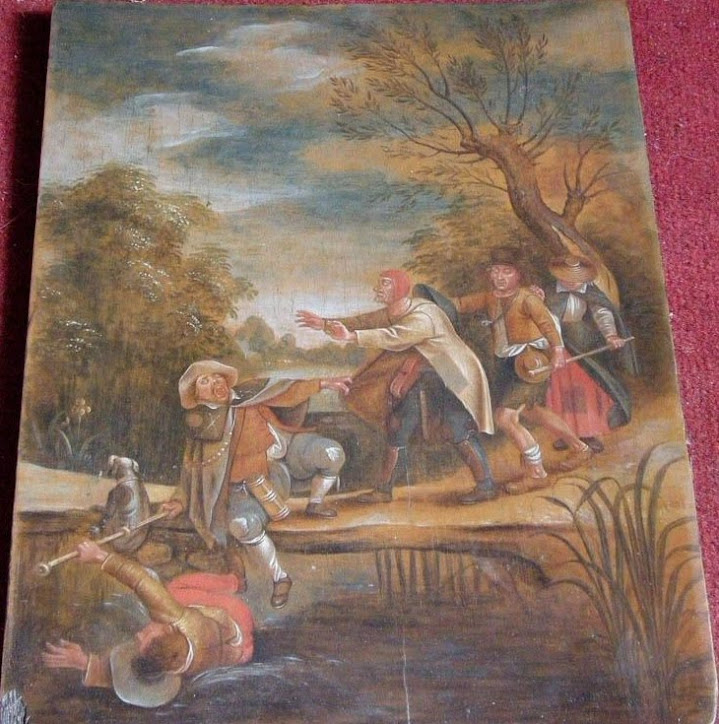Sunday, January 31, 2010
Fountain of Youth
Wednesday, January 27, 2010
Artists I Collect
Art Thief
Bruegel/Hidden Images
On April 6th, 2006, I purchased at Christies Important Old Masters
Painting Auction "Circle of Peter Brueghel the Younger, Allegory
of Spring, oil on panel". On the back of the panel are three wax
seals with coats of arms, as well as, a label reading Collection
of Prince Esterhazy, Budapest. It had been in the collection of a
South American family since 1949.
Approximately two weeks after acquiring the Brueghel, I started
noticing strange anamolies in the panel/painting. First of all
there was an odd incongruous grid system raised on the panel.
After careful observation and analysis, I started noticing words
written on the panel. After awhile, those words became the
outline of figures and faces on the panel. By shining and shaking
a raking light (flashlight) on the panel at eye level, thus
mimicing a strobe light, a different image other than the original
visible painting begins to emerge. Further, at different
distances from the panel, different images appear. Thus there are
at least 4 different images (paintings) painted on the panel,
depending on your distance from the panel. At first I shined the
raking light in a dark room, but after months of experimentation,
it seems the images are clearer with the lights on in the room,
all but the ones shining directly down on the painting, the ones
that would be considered the correct way to see the original or
outer image on the panel. When I was looking at the painting from
very close or about 1 foot away, it was blurry to me because I
need to wear reading glasses. The blurriness is what enables me
to see the images (the new images are clear to me). They are
painted out of focus. In other words, with reading glasses so the
outer image is perfectly clear, the other images disappear. The
same goes when I am standing far from the painting. In that case,
the outer visible image is clear to me without glasses and I
cannot see the hidden images. When I put the reading glasses on
and look at the painting from a distance everything is blurry
again and I can now see the hidden images again clearly. The old
masters had some sort of optical or lense device to hide the
images. Also, the panel is slightly bowed or warped inward which
forms a concave (convex?) mirror. The ground under the painting
is made with a lead white paint which may figure into the process
by reflecting what is underneath outwards. The process is similar
to anamorphic art, however, you do not need to be at an
exaggerated angle to see what I m referring to. The only written
documentation I can find to possibly explain what I am seeing is a
little anecdote to the life of Albrecht Durer. Apparently, in
1506, Durer went to Bologna to hopefully find someone to teach him
the "secret perspective of Leonardo DaVinci". It was being taught
by a friend of DaVinci. Durer supposedly wrote about his findings
in "History of Measurement". To support my hypothesis, I figure
Brueghel must have left clues to show future generations how to
see his hidden images. In fact he did. I have found two clues in
his paintings. One is in the drawing entitled the artist and the
connoisseur by Peter Brueghel the elder. The connoisseur is
wearing a pair of spectacles. Also, in the Adoration of the Magi
by Peter Brueghel the Elder, again one of the main figures in the
painting is wearing spectacles.
Abraham Ortelius, the 16th century cartographer, friend to Peter
Brueghel the Elder, said in his epitaph on his friend that "Peter
Brueghel paints the unpaintable and often paints a picture
beneath his painting". Todays critics have taken that to mean
that there are hidden meanings in his paintings. They are
misinterpreting Ortelius. He was being literal. There are
paintings beneath his paintings.
